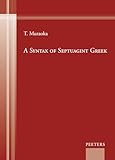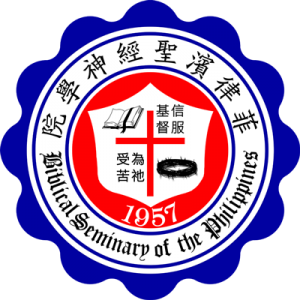A syntax of Septuagint Greek / T. Muraoka.
Publication details: Leuven : Peeters, 2016.Description: lxxiii, 904 pages ; 29 cmISBN:- 9789042933163
- 904293316X
| Item type | Current library | Shelving location | Call number | Status | Date due | Barcode | |
|---|---|---|---|---|---|---|---|
 Books
Books
|
BSOP Library | Reference | PA751 M93s 2016 (Browse shelf(Opens below)) | Available | 00048774 |
Browsing BSOP Library shelves, Shelving location: Reference Close shelf browser (Hides shelf browser)
| No cover image available |

|
No cover image available |

|

|

|

|
||
| PA445.E5 L61 1995 c.2 An intermediate Greek-English lexicon : | PA445 L56 A lexicon abridged from Liddell and Scott's Greek-English lexicon. | PA445 L61 1958 A Greek-English lexicon : | PA751 M93s 2016 A syntax of Septuagint Greek / | PA810 G35 2017 Reading Biblical Greek : a grammar for students / | PA813 G84 A concise exegetical grammar of New Testament Greek / | PA817 C88p A primer of biblical Greek / |
Includes bibliographical references (pages lv-lxxiii), appendices, and indexes.
This is the first ever comprehensive analysis of the morphosyntax and syntax of Septuagint Greek. The work is based on the most up-to-date editions of the Septuagint. The so-called Antiochene version of Samuel, Kings, and Chronicles as well as Judges has been studied. Though this is a synchronic grammar, and though not systematic, comparison with Classical Greek, the Greek of contemporary literature of the Hellenistic-Roman period, papyri and epigraphical data, and New Testament Greek has often been undertaken. Even when analysing translated documents of the Septuagint, the perspective is basically that of its readers. However, attempts were made to determine in what ways and to what extent the structure of the Semitic source languages may have influenced the selection of this or that particular construction by translators. At many places it is demonstrated and illustrated how an analysis of the morphosyntax and syntax can illuminate our general interpretation of the Septuagint text.


